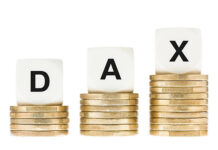The European Central Bank kept its policy unchanged yesterday, maintaining in its forward guidance the easing bias that QE can be expanded both in terms of size and duration if needed. In his press conference, President Draghi maintained a very dovish tone as well, indicating that policymakers were unanimous both in making no changes to their forward guidance and in not providing a timeline for changes to the QE programme.
Even though the Bank did not remove its QE easing bias, as had been widely speculated ahead of the meeting, the euro still gained significantly on Draghi’s remarks. We think that may be due to Draghi’s comment that financial conditions remain broadly supportive, and that although longer-term yields have risen recently, they remain low by historical standards. This implies that the Bank is not particularly worried about the recent rise in euro-area yields or the appreciation in the euro, which may have given investors a reason to add to their long-EUR positions.
EUR/USD skyrocketed after it hit the support hurdle of 1.1485 (S3) to eventually stop at 1.1660 (R1). The price structure still points to an uptrend and thus, we would expect a break above 1.1660 (R1) to open the way for our next resistance of 1.1710 (R2), defined by the peak of the 24th of August 2015.
However, given that we are already close to that key hurdle, we would be careful that a corrective setback may be on the cards soon. Looking at the weekly chart, the 1.1710 (R2) obstacle appears to be the upper bound of the long-term sideways range that has been containing the price action since January 2015. As such, we prefer to wait for a decisive close above that zone before we get confident on larger upside extensions.
As for the big picture, besides pushing back the timing of an announcement on QE changes, not much has changed in our view. Draghi pointed out that a discussion on tweaks to QE should take place in the autumn, suggesting we are likely to get some signals on stimulus changes either in September or October.
Although a lot will depend on incoming data, we think that a likely scenario is that the Bank removes its QE easing bias at the September meeting, thereby laying the groundwork for a formal announcement in October that the pace of QE purchases may be reduced by the turn of the year. Draghi’s speech at the Jackson Hole towards the end of August could provide clearer signals as to whether the Bank is setting up for something like that. Speculation about a QE-reduction announcement by October could keep the euro supported, but as we already noted we would wait for a clear move above 1.1710 (R2) in EUR/USD before we assume the continuation of the existing uptrend.
Aussie slides as RBA’s Debelle pours cold water on rate-hike talk
Overnight, RBA Deputy Governor Guy Debelle said no significance should be read into the RBA’s discussion in the June meeting minutes about the neutral rate of interest, and that Australian rates don’t have to rise simultaneously with other major central banks. He added that an appreciating AUD reduces the benefits of faster global growth for Australia. The Aussie slid on his comments, as they may have scaled back rate-hike expectations, and also signalled that the Bank is uncomfortable with the levels AUD is currently trading at. Even though the outlook for AUD remains positive amid strong economic data, we have to highlight the risk that further dovish signals from the RBA aimed at bring Australian yields back down could cause AUD to give back more of its latest gains.
AUD/USD slipped during the Asian morning Friday, falling below the support (now turned into resistance) line of 0.7900 (R1). The rate continues to trade above the key obstacle of 0.7800 (S2), which acted as the upper bound of the long-term sideways range that contained the price action from March 2016 until the 14th of July 2017. Thus, we still consider the outlook to be positive. Nevertheless, we see signs that the overnight slide may continue for a while, perhaps to challenge the key territory of 0.7800 (S2) as a support this time. Our short-term oscillators support the case. The RSI edged south after it exited its above-70 territory and is now testing its 50 line, while the MACD, although positive, lies below its trigger line, pointing down.
Today’s highlights:
We only get economic data from Canada. The nation’s CPIs for June are due out and expectations are for the headline CPI rate to have declined, while no forecast is available for the core print. Even though a potential slowdown in the CPI could hurt CAD on the news, we doubt that it will deter the BoC from hiking rates again this year, as the Bank already expects inflation to slow further in Q3, before picking up again. We also get the nation’s retail sales for May and expectations are for a slowdown.
EUR/USD

Support: 1.1615 (S1), 1.1585 (S2), 1.1485 (S3)
Resistance: 1.1660 (R1), 1.1710 (R2), 1.1785 (R3)
AUD/USD

Support: 0.7840 (S1), 0.7800 (S2), 0.7740 (S3)
Resistance: 0.7900 (R1), 0.8000 (R2), 0.8070 (R3)












